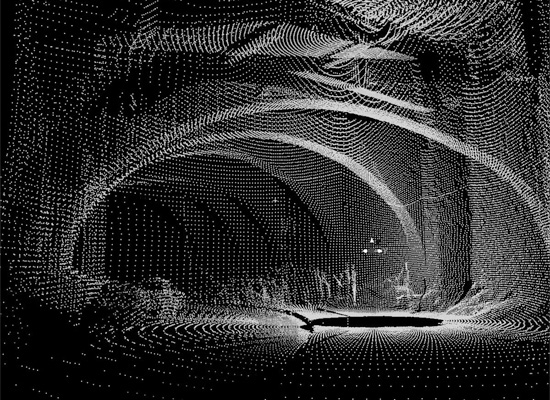Links and write-ups about beautiful things from around the web!
-
Drawing Hands
Animator Patrick Smith offers advice over on Scribble Junkies about drawing hands, an area of life drawing I still struggle with. He rails against both Preston Blair and Burne Hogarth’s popular treatises, and I’d have to agree with him there (I think the Hogarth “dynamic” books stunted my artistic abilities and understanding of anatomy by a few years, personally…).
One of the responses in the comments section rings true: “The drawings of hands you admire were probably drawn by people who looked at hands, not drawings of drawings of hands.”
-
On the Longevity of Sam & Max
Yeah, it’s great. A lot of that is the fans that have kept it alive. When people discovered it, they would be such rabid fans of it they would feel like they were the ones that got it. It was a little too obscure for their friends, maybe, but they were the ones that were getting it. A thing about the old comics I always heard was that people would lend them to their friends and never get them back. It was always this process where you’d be trying to turn someone onto it, which I thought was great. So there was a long stretch where I didn’t do anything with Sam & Max and there were fan sites that were keeping them active, so I attribute that [to the fact] they’re still around.
The Onion A.V. Club catches up with and gets a good interview from my favorite cartoonist Steve Purcell to ask him about Monkey Island, Sinistar, and the new season of Telltale’s adaptation of his creation.
Fun fact: one of the first websites I created way back in 1994 was a Sam & Max fan site with a handful of scans from the comics and related ephemera, so I guess I was one of those fans!
-
Solaris

Solaris (1972). Something of a lyrical Russian follow-up to 2001: A Space Odyssey, a story of personal grief and longing set aboard a space station hovering over an abyssal alien ocean. Great use of understated sets and on-Earth scenery with allusions to the style of the Old Masters. Between Solaris, Alphaville, and Children of Men, I’m discovering that my favorite cinematic dystopian futures are the ones that make little or no effort to appear futuristic.
-
Neil Degrasse Tyson Gets Hate Mail from Kids About

Neil Degrasse Tyson gets hate mail from kids about Pluto. The shift in tone from letter to letter is great, as kids begin to accept that “thats science”.
(Via Coudal Partners)
-
Harmony
Nifty HTML5 <canvas> procedural/generative drawing demo (similar to drawing in real time with Processing or The Scribbler)
-
Observation of an Antimatter Hypernucleus
Nuclear collisions recreate conditions in the universe microsecondsafter the Big Bang. […] We report the observation of antihypertritons — comprised of an antiproton, antineutron, and antilambda hyperon — produced by colliding gold nuclei at high energy. The production and properties of antinuclei, and nuclei containing strange quarks, have implications spanning nuclear/particle physics, astrophysics, and cosmology.
My layman’s understanding of this is that it’s a significant find, if verified. Basically they’ve created a particle that is neither matter nor antimatter, but lies just off the plane of strangeness (“strange” as in the quark), and might be the kind of thing only found at the cores of collapsed stars. The Register’s easy-to-read writeup has a good suggestion that this “negative strangeness” they talk about should be dubbed “hyper-boringness”.
-
Laser Mapped Caves

La Subterranea, a research project laser-mapping out 2km worth of the caves and tunnels running beneath Guanajuato, Mexico.
(Via Make)
-
Mind Control Pinball
Researchers from the Berlin Brain-Computer Interface project demonstrate their research into mind-control pinball, which is an important field of study if ever there was one. BUT HOW DO YOU NUDGE?
Also, the Addams Family table is a great choice for such a project (Fester would approve), but how cool would it have been if they’d hooked him up to the one-of-a-kind Sega/Stern museum table The Brain?
(Via Make)
-
Rapid Prototyping with Ceramics

If you’re the sort of lab that’s engineering a method of printing ceramic materials using rapid prototyping machines, I suppose it’d make sense that you’d already have made some real-life polygonal Utah teapots! I never thought about it before, but for the 3D graphics humor value I really, really want one of these now. You can read about the Utanalog project and see finished photos (and a video explaining the whole thing) over on the Unfold blog.
-
Hirokazu Kore-edas ワンダフルライフ Wandâfuru Raifu (Afterlife)

From Hirokazu Kore-eda’s ワンダフルライフ (Wandâfuru raifu), released in the U.S. in 1998 as Afterlife. This is likely my favorite movie of all time. Dig up a copy at your neighborhood indie video store when you get a chance, it’s good. It’s a simple, quiet parable about life, death, loss, memory, love, and cinema, somewhere between Kurosawa’s Ikiru and Michel Gondry’s Eternal Sunshine.
After whining for years about someone borrowing my out-of-print DVD copy without returning it, I finally looked around and discovered the vastly superior Japanese NTSC Region 2 copy of the movie. ¥3,990 later, I’m now able to enjoy it again as I saw it at the theater in anamorphic widescreen, optional subtitles, and none of the horrible digital low-pass smoothing that someone thought would “fix” the grainy 16mm film’s appearance. Time for a movie screening, I think…
